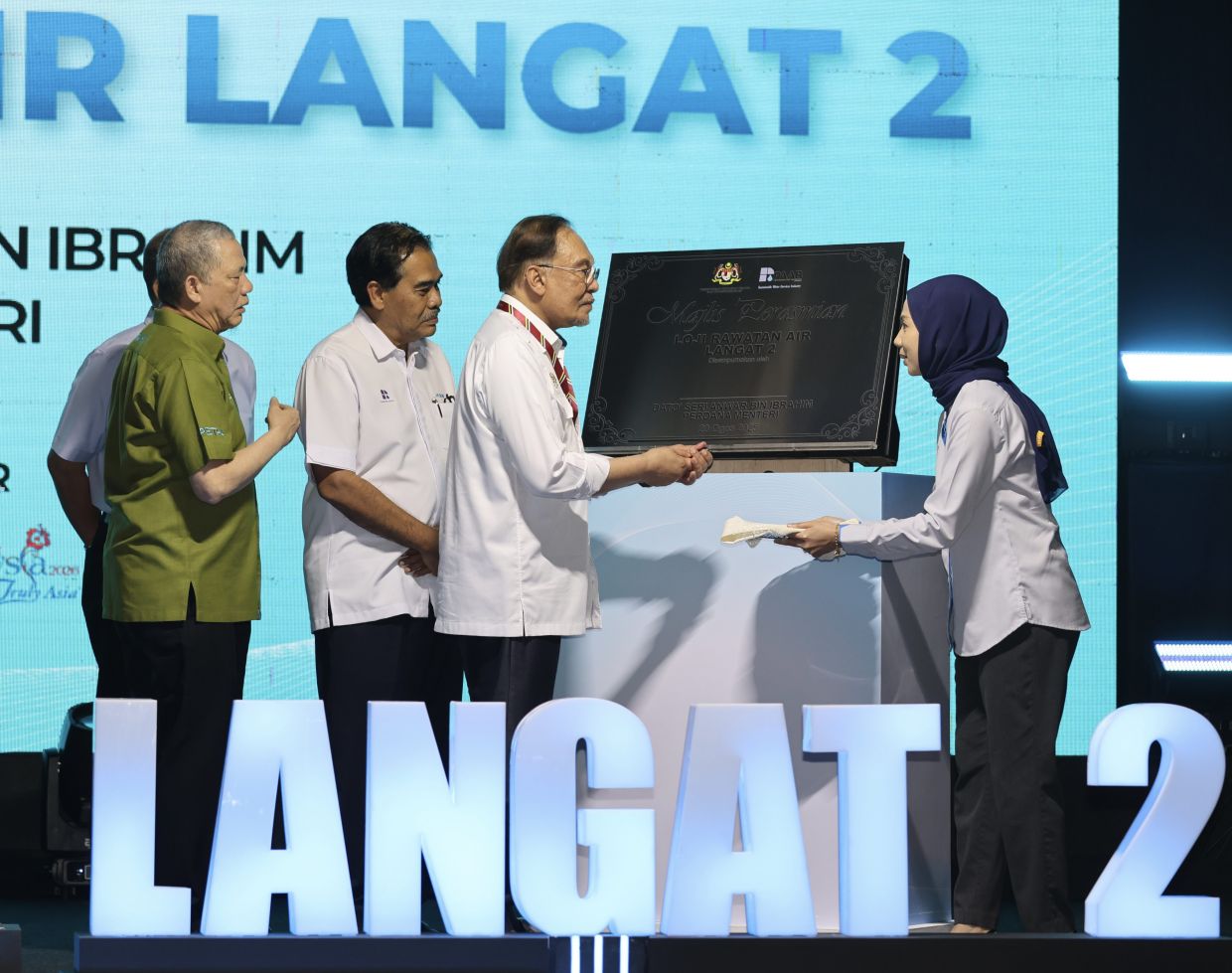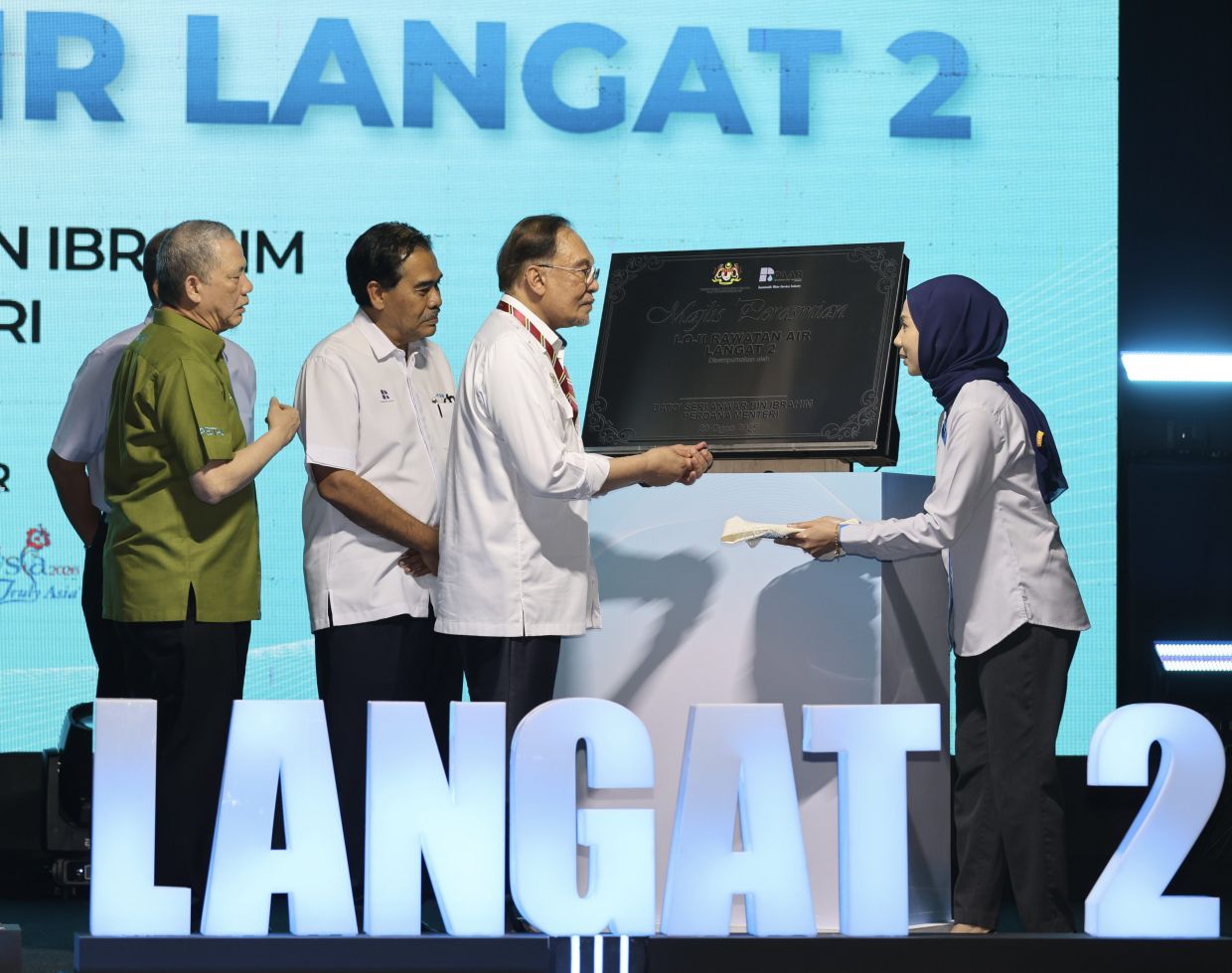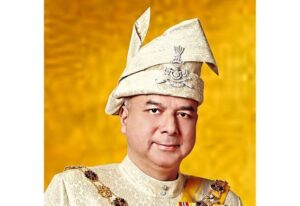
HULU LANGAT: Malaysia’s vast water and energy resources are key to its appeal as a prime destination for foreign investment, supporting the country’s growing industrial and population needs, says Datuk Seri Anwar Ibrahim.
While officiating the Langat 2 water treatment plant here, the Prime Minister said the state-of-the-art facility marks a significant milestone in Malaysia’s infrastructure development, enhancing its attractiveness for investors in sectors like data centres, semiconductors and artificial intelligence (AI).
“The Langat 2 project underscores our capability to manage complex, high-tech initiatives with our own expertise.
“This is a proud moment for Malaysians, demonstrating our ability to manage and execute such massive projects efficiently using local talents,” he said in his speech.
Developed by Pengurusan Aset Air Berhad (PAAB), the Langat 2 facility, boasting a capacity of 1,130 million litres per day (MLD), is not only essential for meeting the high demand for treated water in Selangor, Kuala Lumpur and Putrajaya, but also plays a strategic role in attracting foreign investors.
“Water and energy infrastructure are critical factors for investors.
“Our ability to provide these resources reliably and affordably is a major draw for investment in sectors like data centres, AI and semiconductors,” he said.
Also present at the ceremony were Deputy Prime Minister Datuk Seri Fadillah Yusof, who is also Energy Transition and Water Transformation Minister, ministry secretary-general Datuk Mad Zaidi Mohd Karli, PAAB Chairman Datuk Seri Jaseni Maidinsa and Selangor infrastructure and agriculture committee chairman Datuk Izham Hashim.
Addressing the ongoing challenges in Malaysia’s water industry, Anwar highlighted the need to replace old water pipes, particularly to reduce water wastage and non-revenue water (NRW).
“We still face challenges with water wastage and outdated infrastructure, but projects like Langat 2 show we are on the right path,” he said.
Built in the Hulu Langat district, the Langat 2 facility involves transferring raw water from the Kelau Dam in Pahang through a sophisticated 44.6km tunnel across the Titiwangsa range, showcasing advanced engineering and environmental sustainability.
Costing RM4.22bil, the project now benefits over 790,000 consumers accounts across Selangor and the Federal Territories of Kuala Lumpur and Putrajaya.
The supply coverage includes key urban and suburban areas within the northern corridor (Ampang, KL north – Wangsa Maju to Maluri, Keramat and Gombak) and the western corridor (KL city centre, KL south, Petaling, Sungai Besi, Kinrara and Puchong).
“This is not just a plant; it is a symbol of our commitment to sustainable development and efficient resource management.
“By connecting two major corridors, the northern and western, Langat 2 ensures a stable and sufficient water supply, crucial for the continued economic growth and industrial development of the area,” Anwar added.
Fadillah, in his speech, said his ministry is set to focus on reducing non-revenue water (NRW) as slated in the 13th Malaysia Plan (13MP).
“Through the Critical Pipe Replacement Programme, we are implementing a comprehensive solution to tackle non-revenue water across Malaysia.
“Our goal is to significantly reduce water wastage and improve efficiency.”
He said incentives will be offered to water operators who successfully meet NRW targets in identified states.
“The ministry’s initiatives aim to lower the NRW rate to 28.8% by 2030,” he said.
In his speech, Jaseni said the Langat 2 project has come a long way following years of planning and implementation, including land acquisition, settling residents complaints resistance and compensation, which took time.
“The success of Langat 2 is a joint effort and assistance from various stakeholders, such as the federal government, Selangor state government, Pahang state government, National Water Services Commission (Span), Air Selangor and PAAB.
“This reflects a strong inter-governmental commitment in delivery,” he said.
Jaseni noted that the plant’s advanced technologies include the Granular Activated Carbon (GAC) System for dual-filtering and real-time monitoring via the supervisory control and data acquisition (Scada) system.
“These innovations underscore Malaysia’s push towards integrating modern technology in public utilities.”
Additionally, he said the environmentally friendly features of Langat 2, such as the static mixer and zero discharge system, highlight the project’s commitment to sustainability.
“The use of a 1.92-kilometre conveyor pipe system for waste disposal reduces both road safety risks and carbon emissions.”
He also added that PAAB has received seven recognitions from the Malaysia Book of Records for various engineering feats achieved during its construction for Langat 2.






